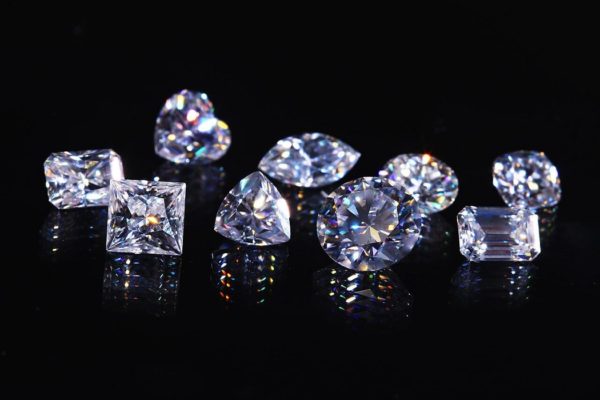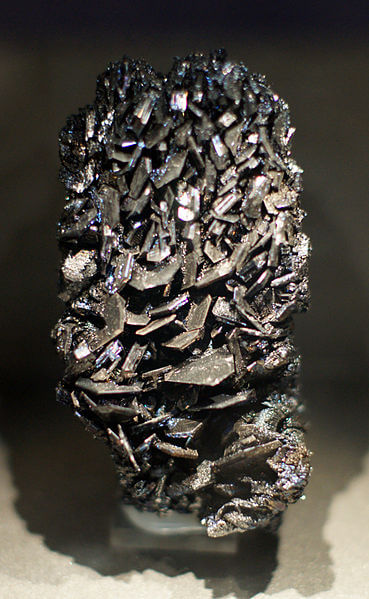The moissanite will probably not be on your list of known or favourite gemstones. However, the truth is that it has caught the attention of many. It is becoming a great option for those who are thinking of getting married. Despite this growing popularity, only few people know about this beautiful stone, which emerged as an alternative to expensive diamonds. Do you want to know everything about moissanite in jewellery? Read on! We will tell you what you need to know about this stone.
Which is the origin of moissanite?
Moissanite has been discovered for the first time by Henri Moissan in 1893. It was found in a meteorite crater in Arizona and was named to his honour. At first, Moissan thought that it was diamonds, but then he realised that it was a unique rock.
This stone has become extremely rare in nature, such that all the moissanite on the market is created in a laboratory – unbelievable! This stone of natural origin can be found in only a few places. It can be found in the rocks of the Earth’s upper mantle and mainly in meteorites. Their connection to outer space is the reason why this stone is known as ‘space diamond’ or ‘stardust’.
But what is moissanite made of?
Moissanite is made of the mineral silicon carbide. A strong covalent bond holds the crystalline structure together, which is similar to diamonds. This is why this stone is very hard and able to withstand high pressures and temperatures.
Then is moissanite a diamond?
Many people get confused and ask for a “moissanite diamond” for their jewellery. Unfortunately, it is not a diamond. Although they may have a resemblance. These two stones are very different in almost every aspect.
Many people wrongly believe that moissanite is a fake gemstone. And the fact is that it is a stone in its own right that looks like a diamond. This means that it is similar to a diamond, not an imitation of a diamond.
That is why a high-quality, well-crafted moissanite jewel is as elegant and sophisticated as any other gemstone.
Characteristics
Strength
Moissanite, after diamonds, is the precious stone used in the hardest jewellery on earth. As a matter of fact, it is one of the most resistant substances in the world. It is classified at 9.25 on the Mohs scale. It is much harder than stones such as sapphires, emeralds or rubies and an excellent choice for everyday use. Since it is very resistant to scratches or breakage. It is not easily chipped or cut. It can withstand high temperatures and still maintain its shine.
Clearness
Since moissanites are created in the laboratory, there is a lot of control over the final product. Frequently they have small filiform inclusions that are formed during the process of creating the stone. However, these defects are generally only visible with magnification.
Size in carats
It is denser than diamonds, which means it is heavier. Comparing both stones of the same carat weight, the moissanite will look slightly smaller.

Gloss
Moissanite has an exceptional gloss and is one of the most brilliant gemstones. Large moissanites have what is known as the ‘rainbow effect’, which is a fiery, colourful flash of colour when the stone is seen in light, especially in natural light. Since they have a very high refractive index.
Colour
It has three colour categories: colourless, almost colourless and slightly dyed. Colourless gemstones are the most desirable. These stones tend to have green, yellow or brown dyes, which is why it is important to observe the stone carefully before buying it to make sure that it does not contain undesirable colours. A coloured moissanite can be difficult to find if you are looking for it.
Moissanite in jewellery
This stone is perfect for use in any type of jewellery and can be adapted to a variety of styles. Due to its intense shine, this is gorgeous when you want to dress up and add some glamour. Under the lights, they shine beautifully.
The main advantage of this stone in jewellery, is its similarity to diamonds. For this reason you can find moissanite jewellery, very similar to diamonds, but at a much lower price.
Moissanite engagement rings
While moissanites are excellent in all types of jewellery. Several couples are taking this stone as an option for their engagement rings. As a practical matter, moissanite crystals are durable, affordable and beautiful. Most importantly, they are looking for originality, this gemstone is ideal as it is not among the classic and traditional stones. Actually, they are quite avant-garde and very modern. Amazing!

Likewise, moissanite works perfectly for any kind of ring setting. Do not require protection in its setting, as they are durable enough. Furthermore, just like a diamond, they work with any colour of metal, whether yellow, pink or white gold.
Which is the best cut?
Moissanites can be cut into any common gemstone shape, but the most popular is the round brilliant cut. This classic cut tends to maximize the beauty of the stone and is also extremely versatile to use.
Price
While moissanite is often chosen as an alternative to diamonds, do not expect it to be cheap. It is a comparatively affordable gemstone, however, high quality moissanite can still have high prices. It requires a laborious process, plus many resources are consumed to create it, so it can be cheap.
Moissanite prices can also vary according to the brand and quality, but in general, a 1-carat colourless stone costs on average around $600.
How to clean moissanite jewellery?
Due to its durability, moissanite is an easy to maintain stone. In the course of time, accumulation of dirt and grime can result in a cloudy or opaque looking gemstone. However, washing with a soft cloth, mild soap and water is the best way to restore its shine. It is also important that you avoid aggressive chemicals from coming into contact with the moissanite.






ALFA